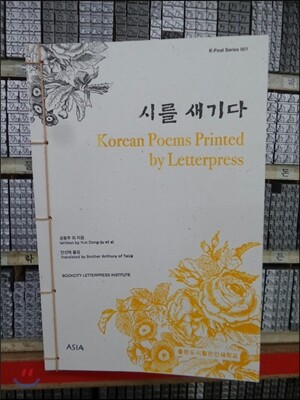Shim Hun (1901 – 1936) was a Korean novelist, poet, playwright and patriot.
Life
Shim Hun was born Shim Dae-seop in Seoul to an old family that had long served the royal court as ministers. Shim entered Gyeongseong Ordinary School in 1915, but due to his participation in the March 1st Movement protests against Japanese rule in Korea in 1919, was arrested and imprisoned for eight months. After his release he went into exile in Hangzhou, China, where he attended Zhejiang University. Upon his return to Korea in 1923, he joined Yeomgunsa, the predecessor of the Korea Artists Proletariat Federation (KAPF), forming the theater group Geugmunhoe.
From then until 1930, Shim Hun worked as a newspaper columnist and reporter at the Dong-a Ilbo, the Chosun Ilbo, and the Joseon Jung-ang Ilbo. He was interested in film, playing the role of Lee Su-il in the 1926 film Janghanmong, and serializing the "film novel" Talchum (탈춤 Mask Dance) in the Dong-a Ilbo. Shim went to Japan to study filmmaking and upon his return to Korea made his only film, At Daybreak (먼동이 틀때), which he wrote, adapted, and directed.
In 1935 Shim won the Dong-a Ilbo's fiction competition commemorating the 15th anniversary of the paper for his most famous novel, Sangnoksu (상록수 The Evergreen). He used the prize money to create the Sangnok Academy, which was part of the rural enlightenment movement. Shim died suddenly in 1936 of typhoid fever.
Writing
Shim Hun was a prolific writer. In his short life, he wrote several novels, short stories, plays and poems. He was a meticulous writer who kept original copies of his writing; most of Shim's original manuscripts (over 4,000 pages) survive today. Shim's most famous poem, "Kunari omyeon" (그날이 오면 When That Day Comes), written on the occasion of the Gwangju student independence movement of March 1, 1930, expresses the poet's yearning for the day Korea gains independence from Japan.
Shim's novel Dongbang-eui Aein (동방의 애인, Lover from the East) was serialized in the Chosun Ilbo in 1930. His Jiknyuseong (직녀성 Constellation Lyra) was serialized in the Joseon Jung-ang Ilbo in 1934 and is believed to be inspired by his first wife Yi Hae-Yeoung's life. He wrote Sangnoksu (상록수, The Evergreen), a novel about rural development, in 1935 while staying in Dangjin, South Chungcheong Province. Shim's last work was the poem "Joseonui Nama" (조선의 남아 Son of Joseon) which he wrote after learning that the Korean marathon runner Sohn Kee-chung won the gold medal at the 1936 Berlin Olympics. As a colonial subject, Song was forced to run wearing the Japanese flag. Shim's poem was included in the copy of the special bulletin that announced Sohn's victory.
Shim's poetry collection, Kunari Omyeon, was not published until 1949 as the original volume was censored and banned by the Japanese colonial government. His complete works were published in a seven-volume series in 1952 and republished in 1996 and 2016.
심훈(1901~1936)은 대한민국의 소설가다.
생애
심훈(본명은 심대섭)은 1901년 경기도 시흥(현 서울시 동작구)에서 태어났다. 심훈의 집안은 용인의 명문가로, 학교에 들어가기 전부터 서당을 다니며 한문을 배웠으며, 1917년 왕족인 이해영과 조혼을 했다. 1919년 3·1운동에 가담하여 투옥을 당하고, 당시 재학 중이던 경성고등보통학교에서 퇴학당했다. 출옥 후 1920년에 중국으로 망명하여 항저우의 치장대학에 입학했다.
1923년 귀국하여 연극, 영화, 소설 집필에 몰두하였으며, 1925년에는 영화 〈장한몽〉에서 이수일 역으로 출연하기도 했다. 1927년에 일본으로 건너가 영화수업을 받고 영화 〈먼동이 틀 때〉를 제작하여 큰 성공을 거뒀다. 이듬해 조선일보사에 입사하여 1930년 장편소설 《동방의 애인》을 《조선일보》에 연재했으나 검열로 인해 중단되었고, 이어 〈불사조〉도 연재 중 중단되었다. 이후 경성방송국으로 직장을 옮겼으나 사상 문제로 인해 퇴직하고 1932년 충청남도 당진으로 이사하여 집필에 전념했다. 같은 해 1932년에는 시집 《그날이 오면》을 출간하려다 검열로 인해 무산되었다. 이듬해 다시 서울로 올라가 《조선중앙일보》사에 입사하였으나 곧 다시 당진으로 돌아갔다. 1936년 세상을 떠났다.
작품세계
심훈은 시와 소설, 영화 등 다양한 장르를 넘나들며 높은 수준의 성과를 보였다. 그럼에도 심훈의 작품들은 오랜 기간 문단의 주목을 받지 못하고 통속소설, 대중소설 작가로 평가되었다. 이러한 평가는 2000년대에 들어 심훈에 대한 자료들이 새롭게 발굴됨에 따라서 변화하고 있으며, 문학을 비롯한 예술 전반에서 활발하게 활동한 예술인으로서 새롭게 조명되고 있다.
가장 널리 알려진 심훈의 대표작은 장편소설 《상록수》(1935)다. 이 작품은 《동아일보》의 ‘브나로드 운동’의 일환으로 연재되어 농촌계몽운동과 관계된 내용을 담고 있다. 지식인인 박동혁과 채영신이 중심인물이 되어 각자의 고향에서 헌신적으로 농촌사업에 매진하고, 그 과정에서 두 사람이 서로를 사랑하게 된다. 두 사람의 헌신적인 활동의 반대쪽에는 농민을 수탈하는 악덕 고리대금업자와 친일(親日) 지주(地主)의 모습이 적나라하게 묘사된다. 이와 함께 당시의 일제가 내세운 허구적 농촌진흥운동이나 입으로만 떠드는 이상론(理想論)에 대한 비판이 드러난다. 식민지 시대 한국 농촌의 문제성과 현실을 소설적으로 형상화하고 있다는 점에서 높이 평가되는 작품이다.
심훈의 또 다른 대표작은 시 〈그날이 오면〉(1930)이다. 이 작품이 담긴 시집 《그날이 오면》은 1932년에 출간하려 했으나 일제의 검열로 인해 무산되었고, 1949년에 유고집으로 출간되었다. 이 시는 1919년 3·1운동을 기념하여 쓴 대표적인 저항시 중 하나로, 광복을 가정하여 그 순간의 기쁨을 격정적으로 표출하고 있다.
주요 작품
1) 전집
《심훈 전집》, 한성도서주식회사, 1949/1953.
《심훈 문학 전집》, 탐구당, 1966.
《심훈 전집》, 글누림, 2016.
2) 장편소설
《영원의 미소》, 한성도서주식회사, 1935.
《상록수》, 한성도서주식회사, 1936.
《직녀성》, 한성도서주식회사, 1937.
3) 시집
《그날이 오면》, 한성도서주식회사, 1949.
《그날이 오면》, 문화공론사, 1977.




